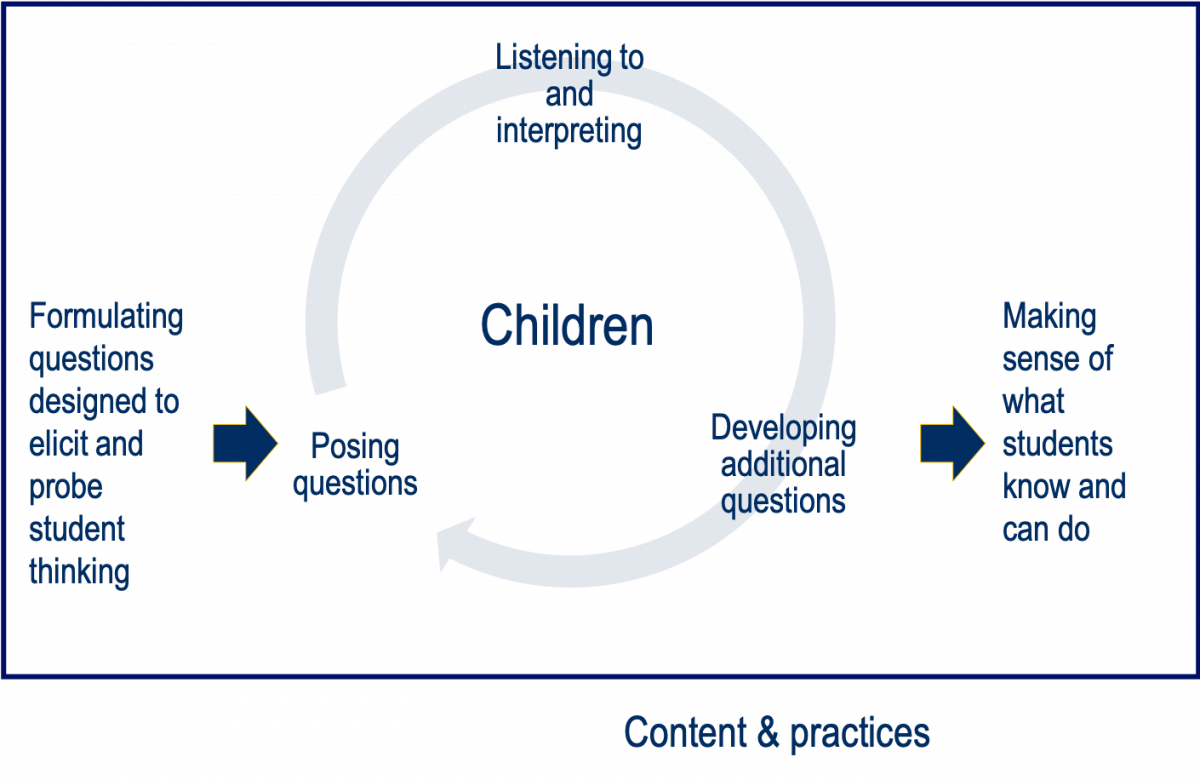What is eliciting and interpreting student thinking?
Teachers pose questions that create space for students to share their thinking about specific academic content. They seek to understand student thinking, including novel points of view, new ideas, ways of thinking, or alternative conceptions. Teachers draw out student thinking through carefully chosen questions and tasks and attend closely to what students do and say. They consider and check alternative interpretations of student ideas and methods. Teachers are attentive to how students might hear their questions and to how students communicate their own thinking. Teachers use what they learn about students to guide instructional decisions, and to surface ideas that will benefit other students. By eliciting and interpreting student thinking, the teacher positions students as sense-makers and centers their thinking as valuable.
How does eliciting and interpreting advance justice?
At the heart of eliciting and interpreting student thinking is the fundamental commitment to students and their ideas, to the belief that students are smart, and to the fact that uncovering and supporting their thinking is the goal of teaching. When teachers learn about students’ ways of thinking and how they communicate ideas, they signal to students that they are knowledgeable and that their ideas are interesting and valued. However, this practice has risks. Patterns of bias related to race, gender, and other social identities, as well as stereotypes about subject matter competence, can easily misshape teachers’ interpretations of students. Skillful eliciting and interpreting can intervene on these biases by enabling teachers to learn about student ideas and challenge false assumptions about students’ lack of competence. When teachers understand and appreciate students’ thinking, they are better able to support students to contribute in class and to position them as capable among their peers.
What are the elements of the practice?
The diagram below breaks down work that teachers do when they are eliciting and interpreting student thinking. This breakdown, or decomposition, helps teacher educators to break down the practice into a set of parts that can be observed and practiced.
